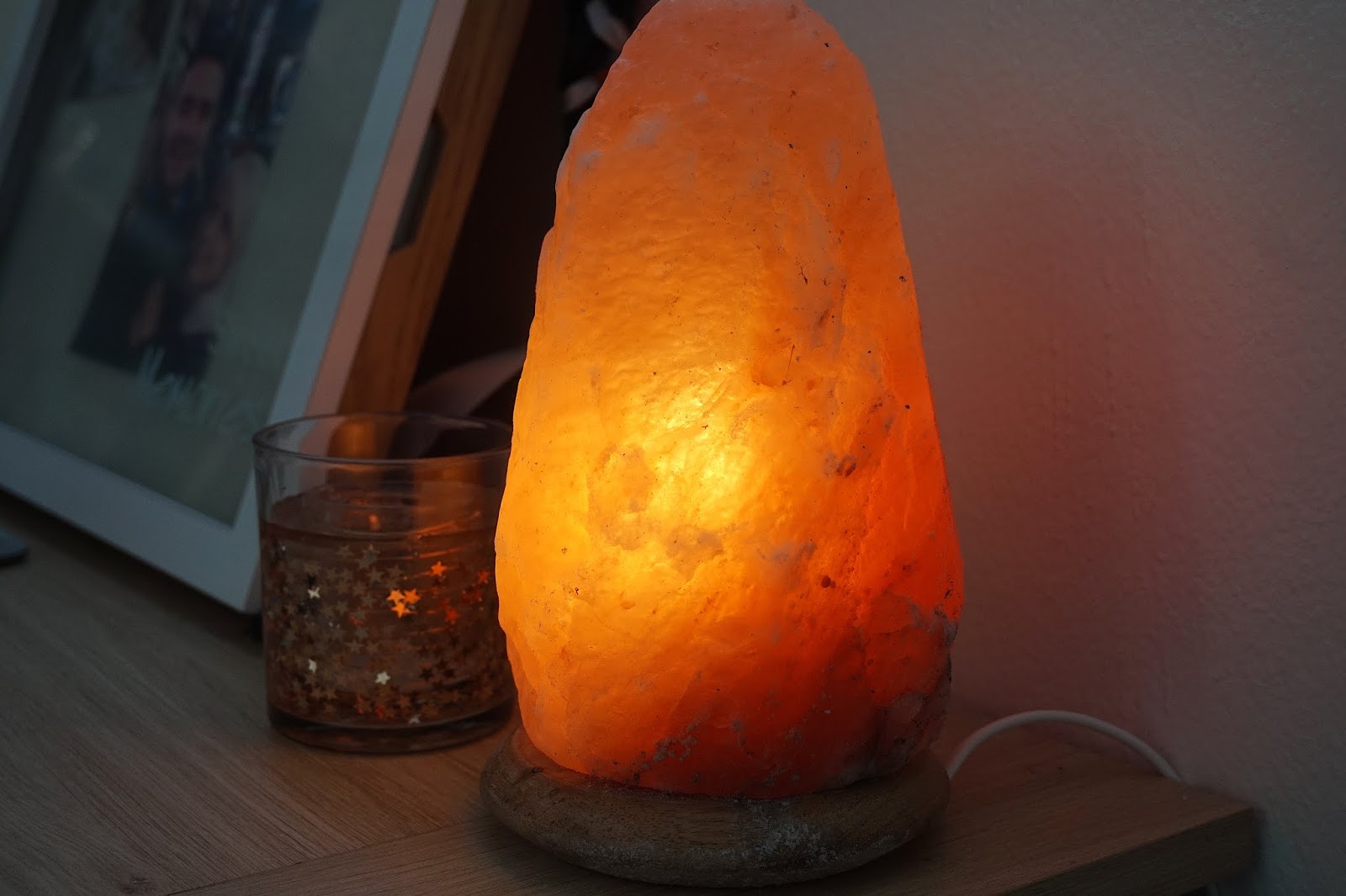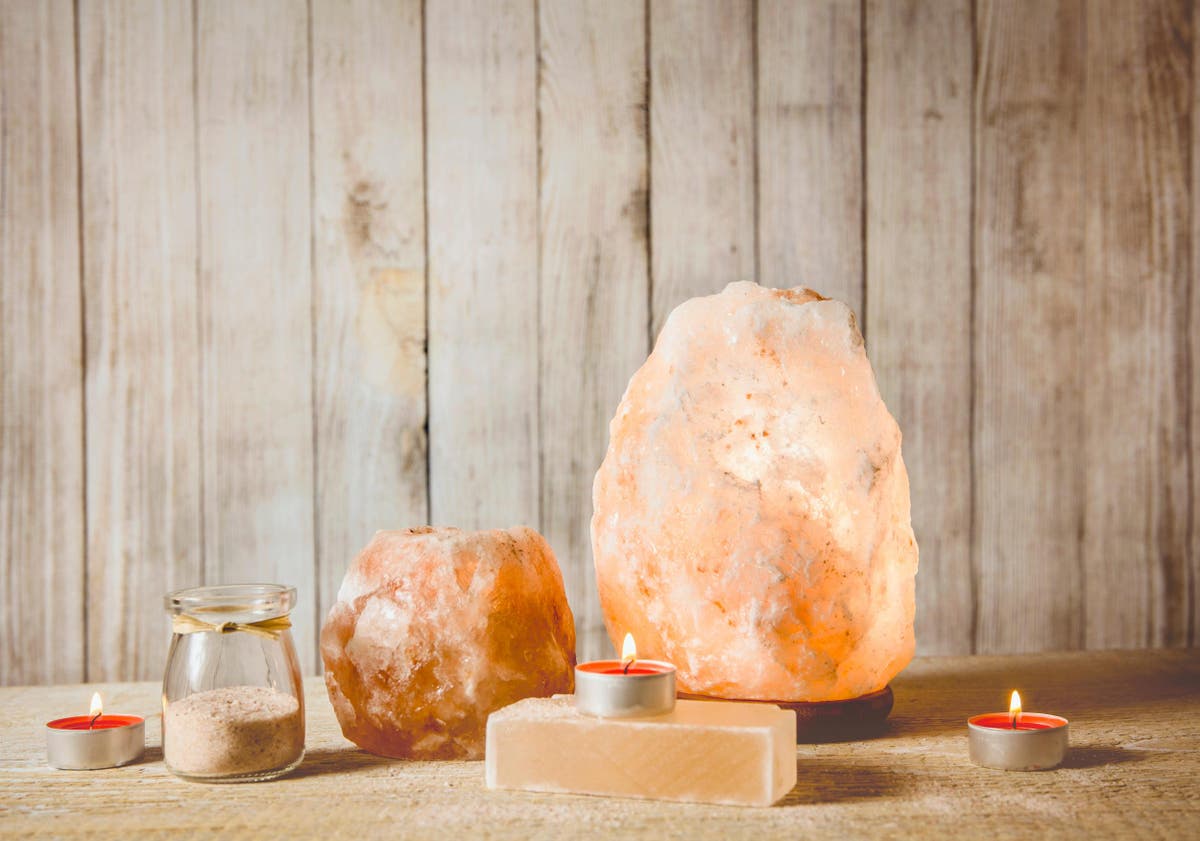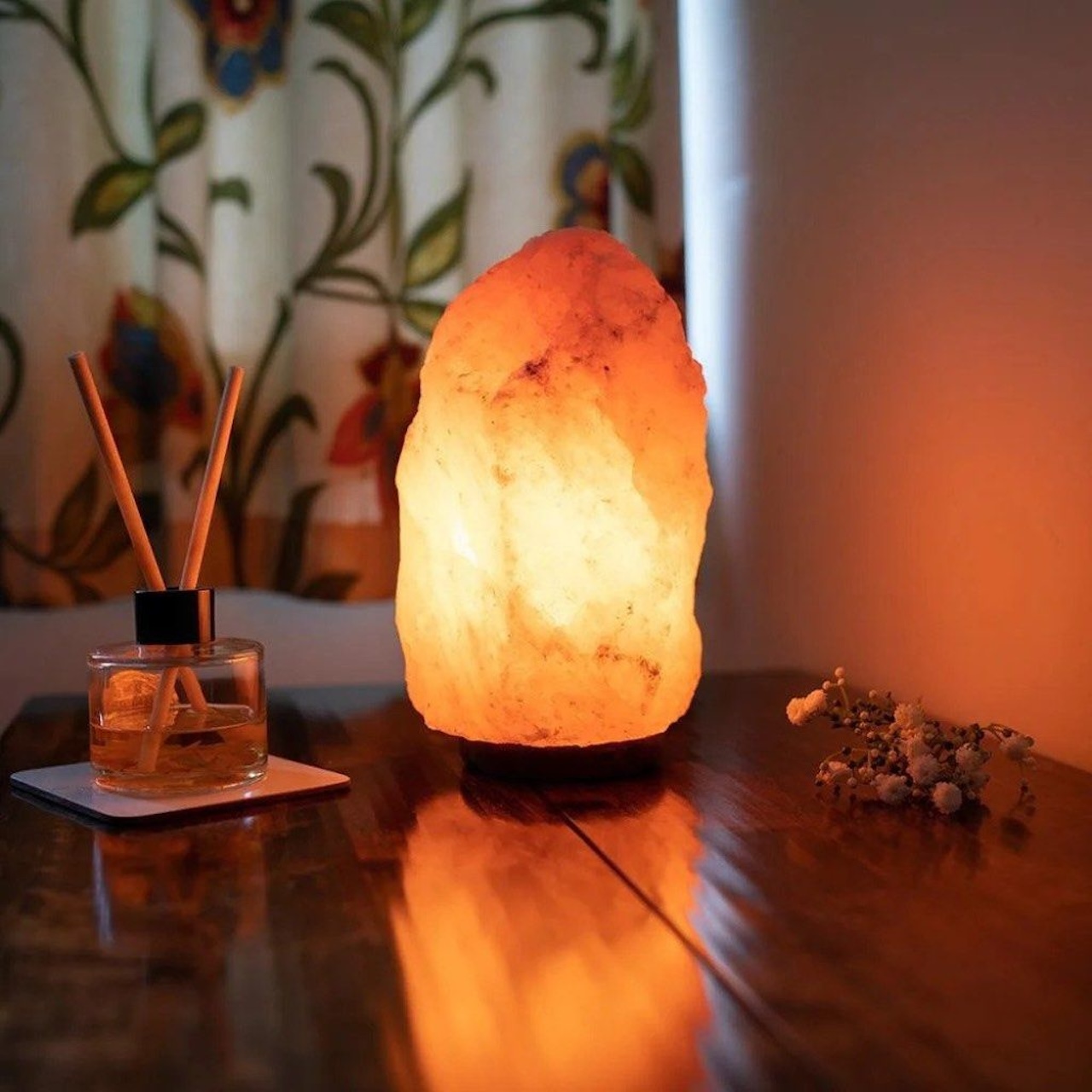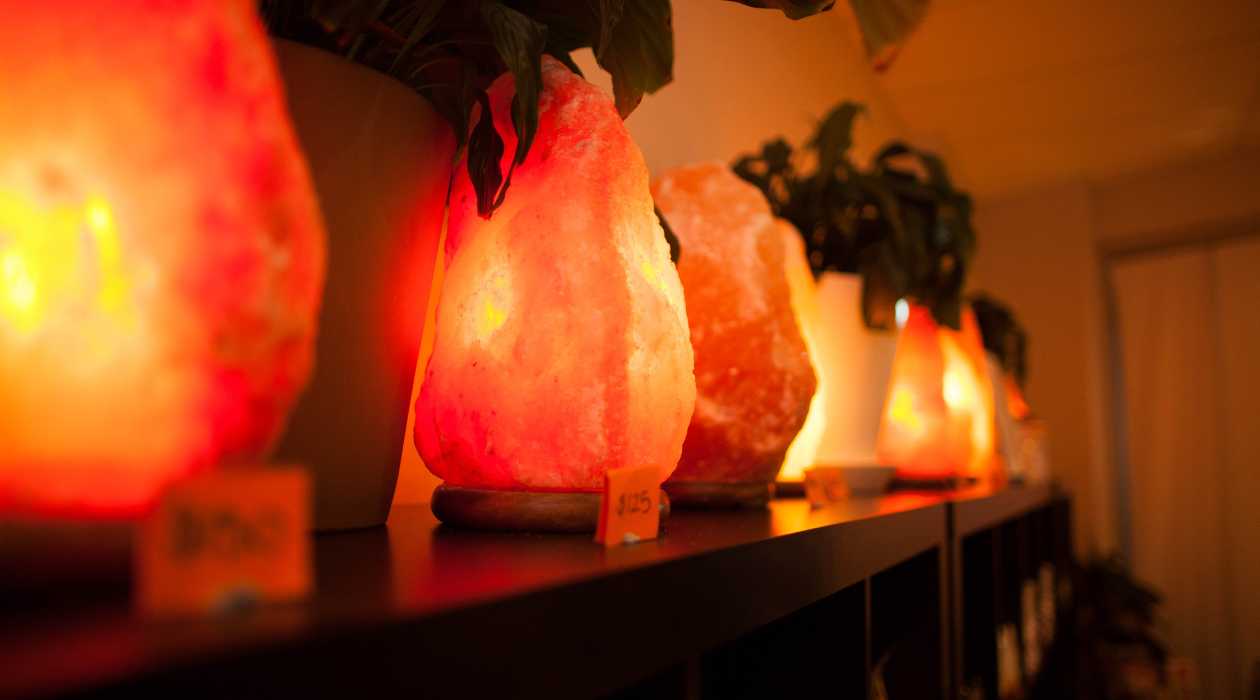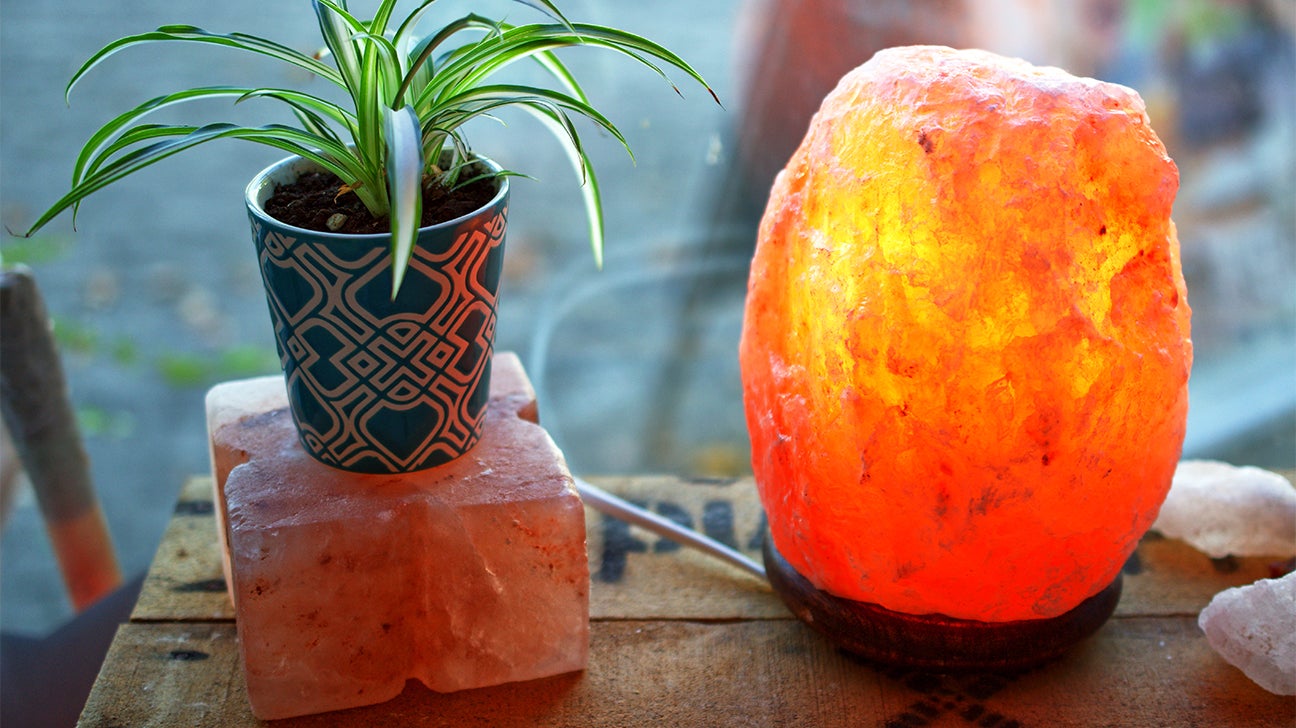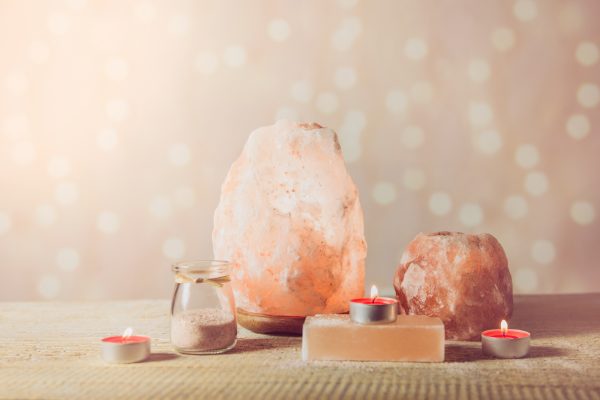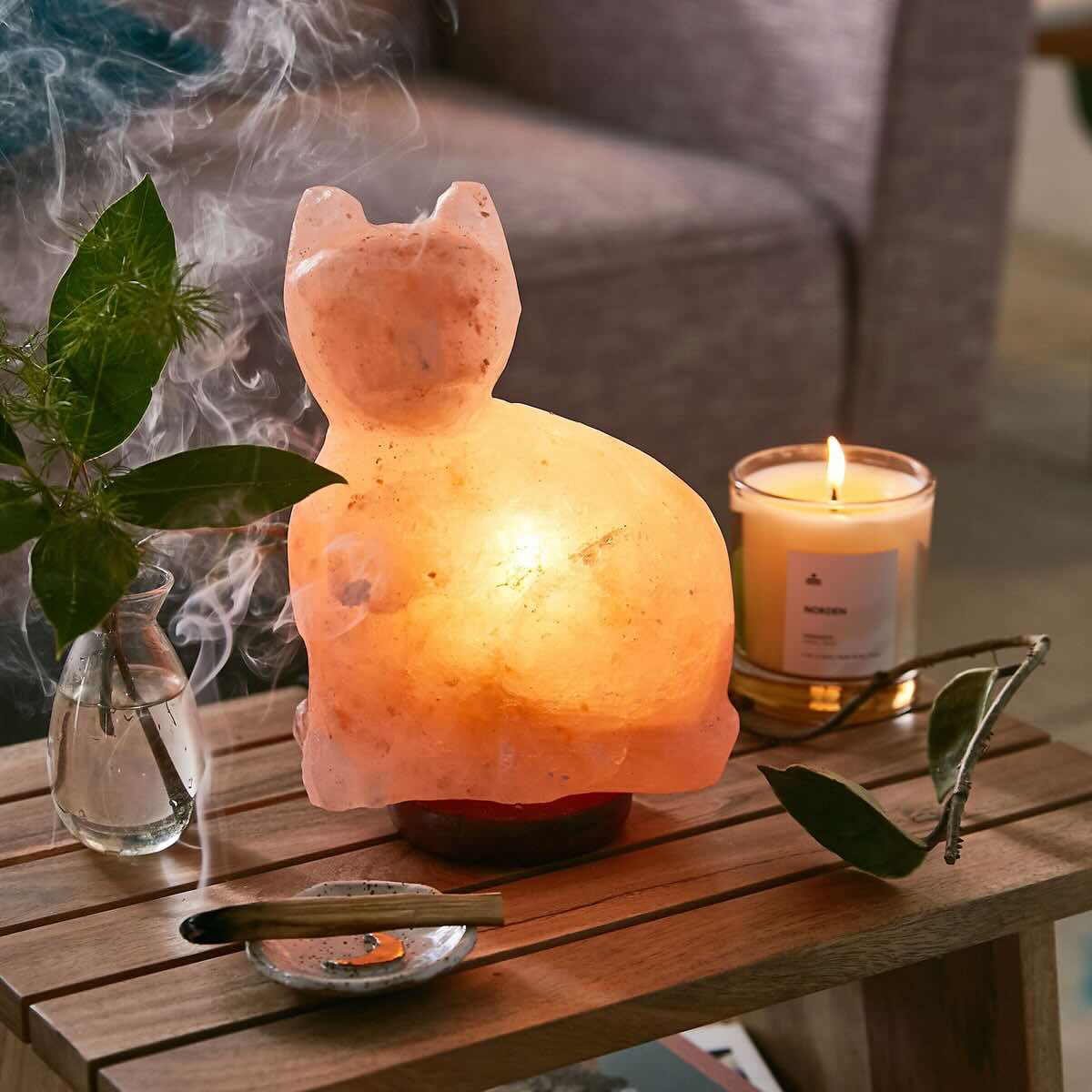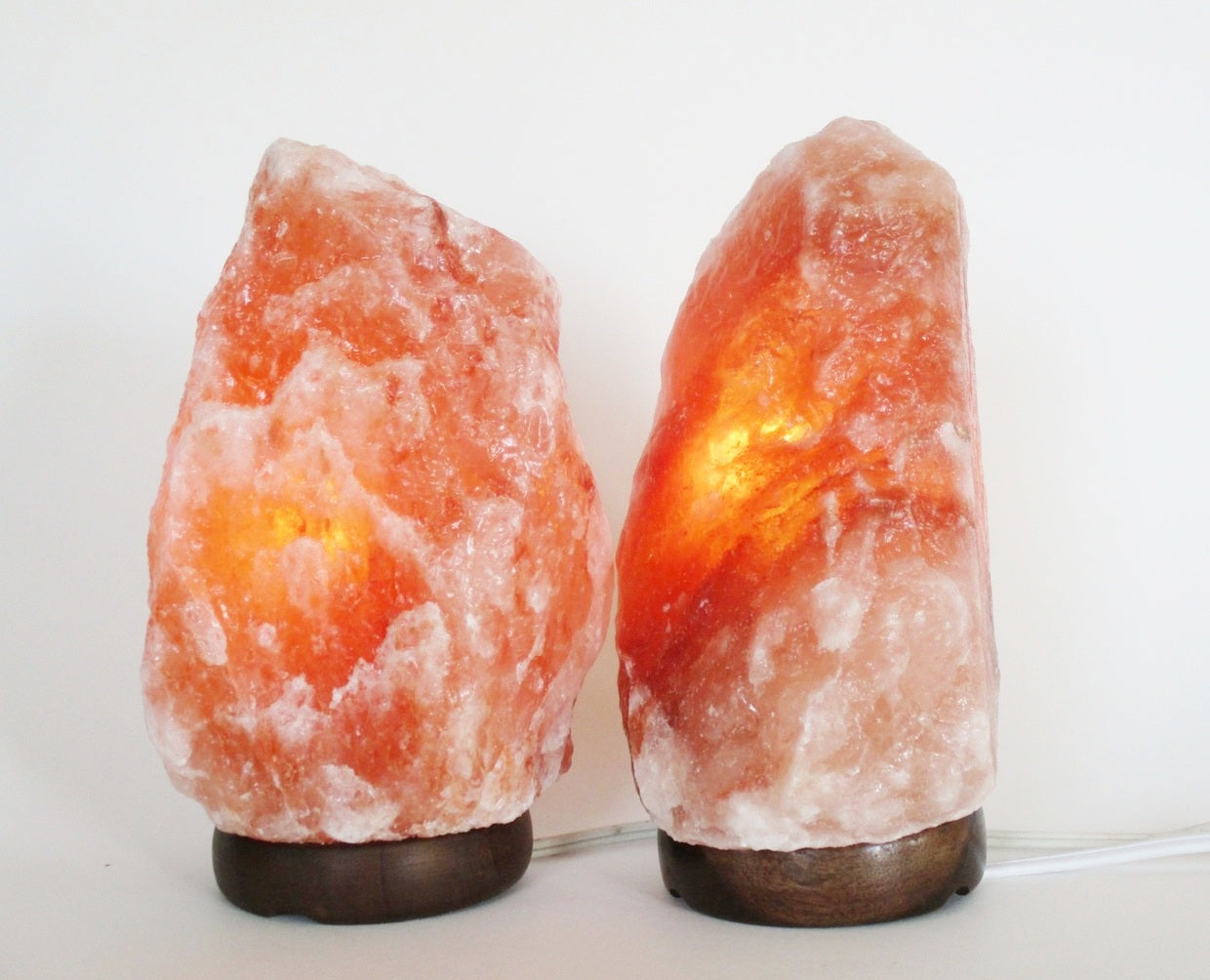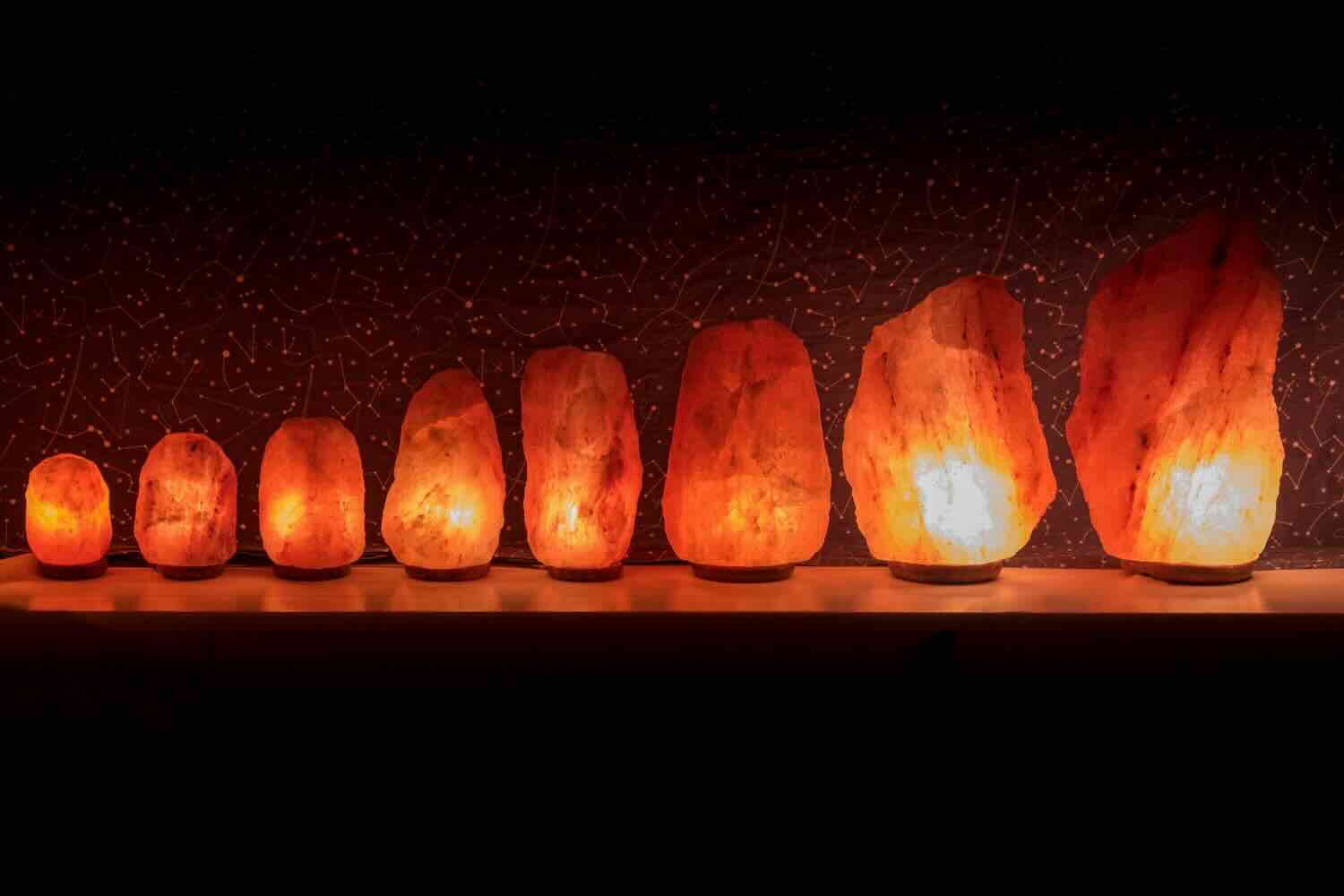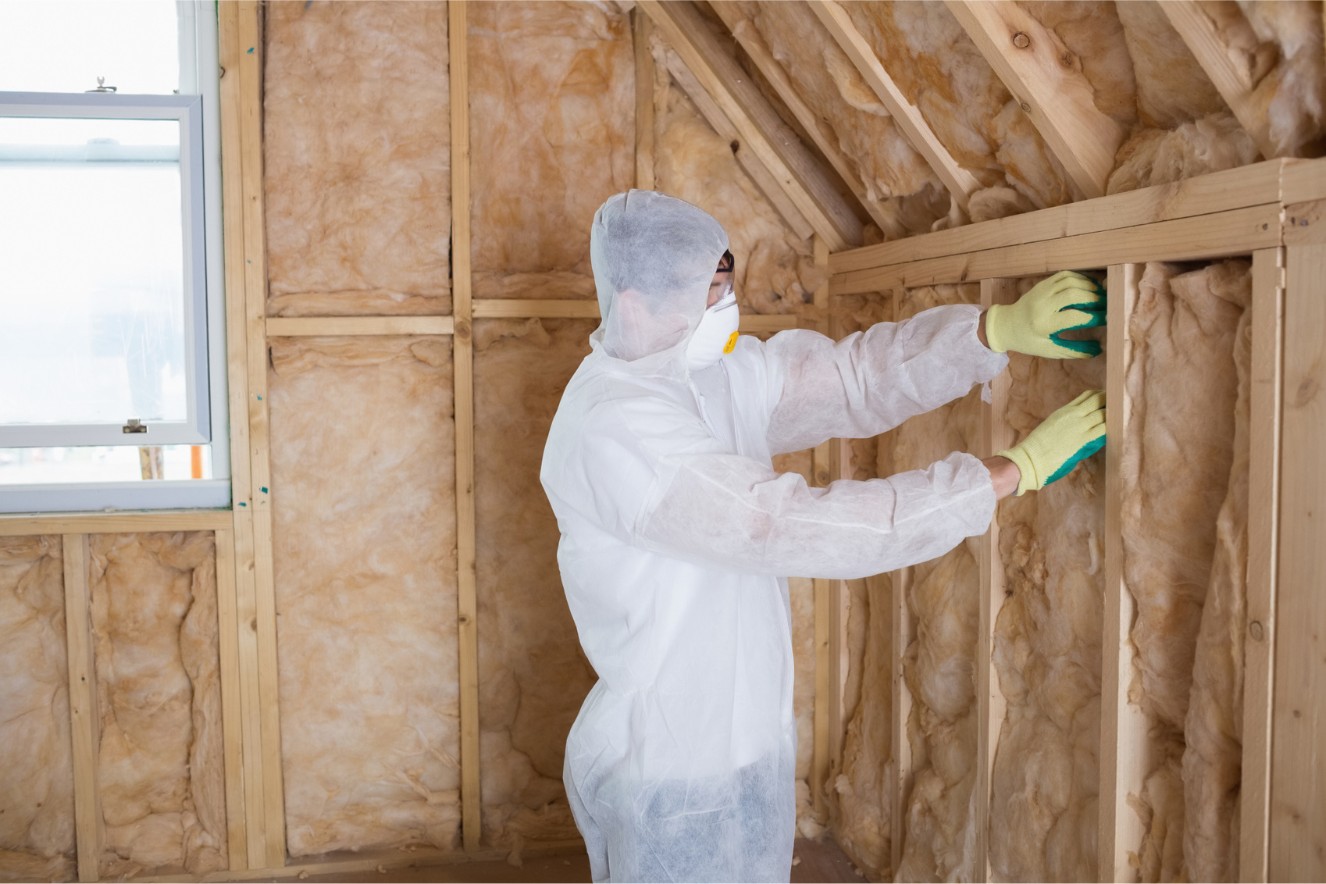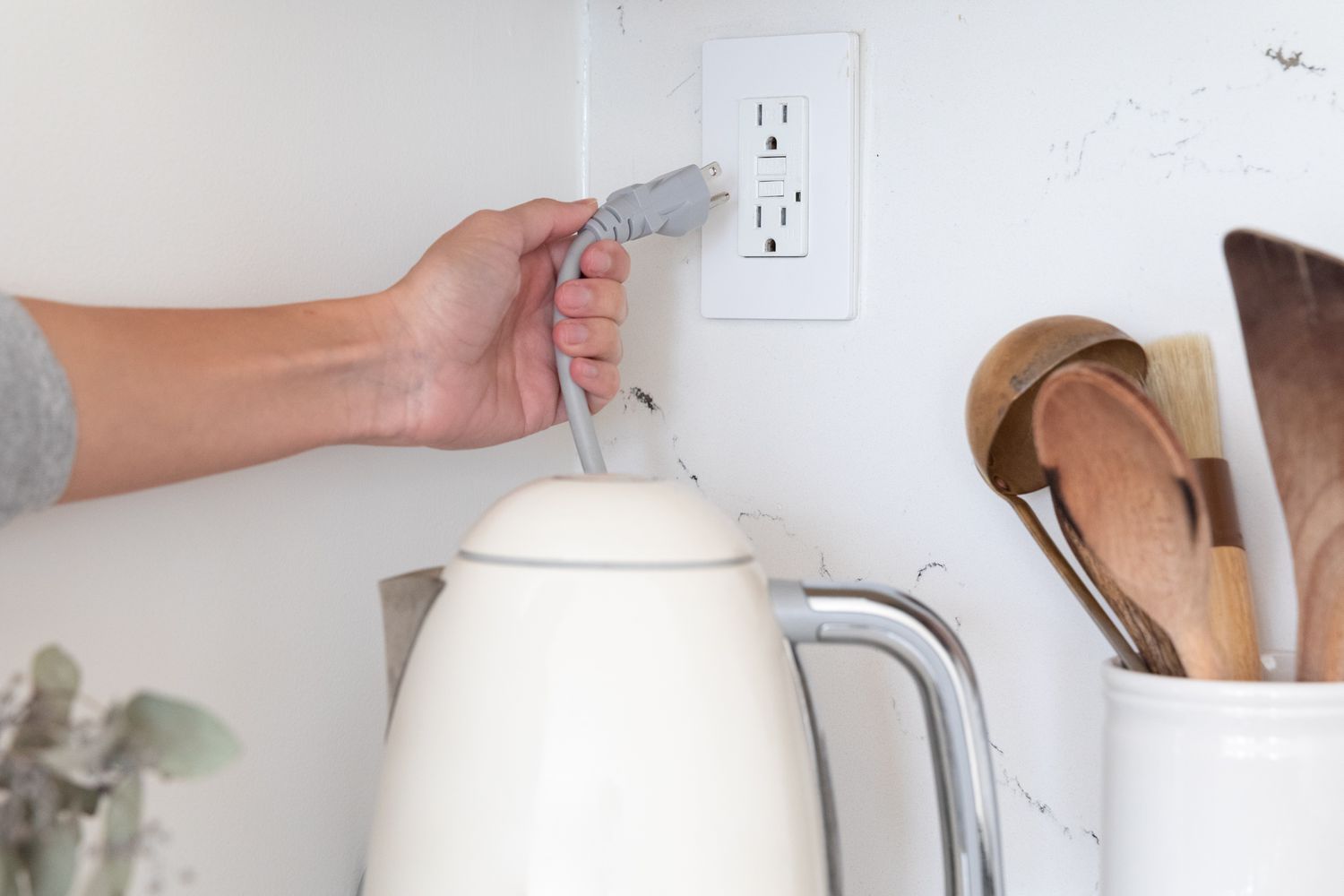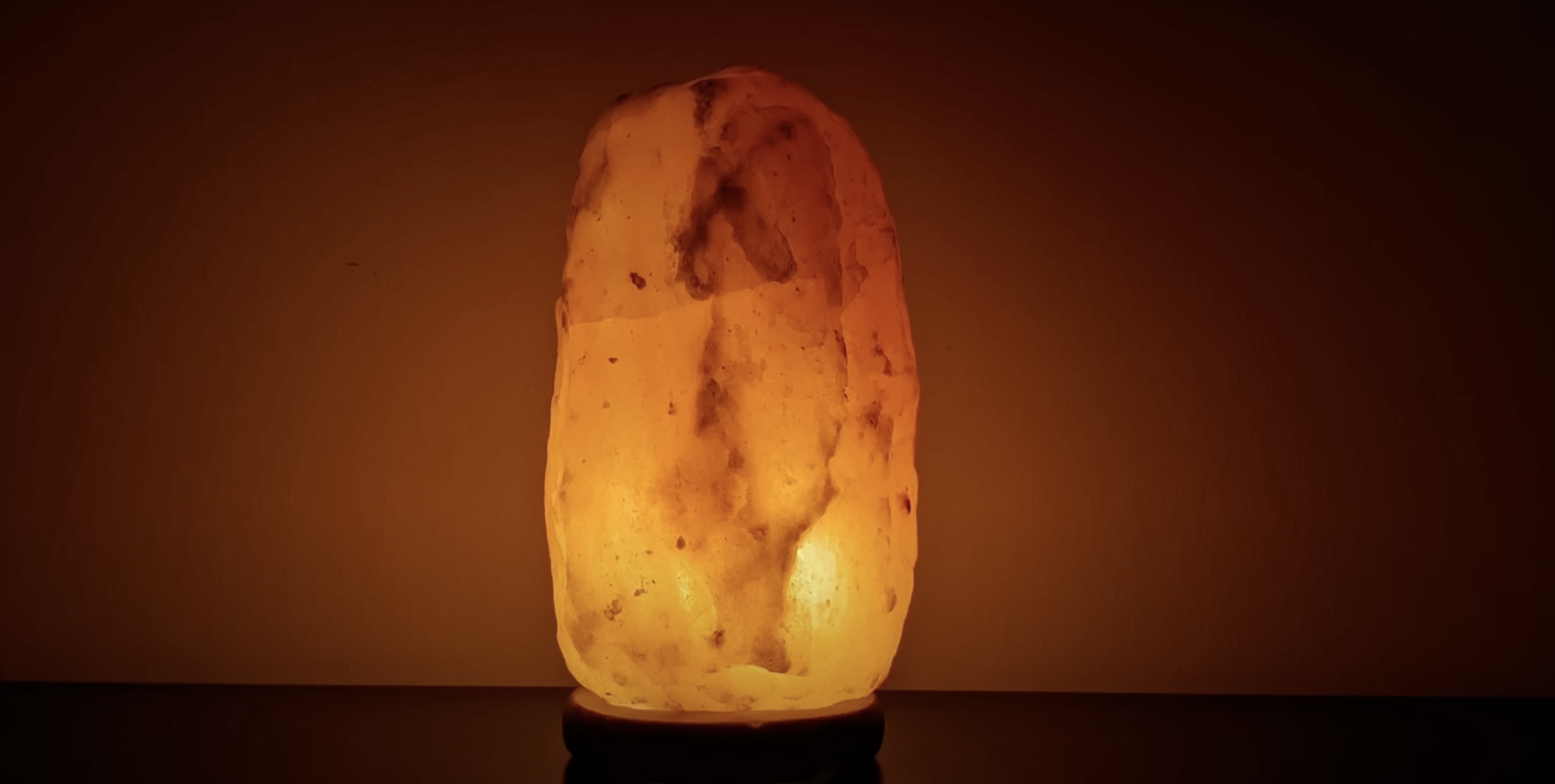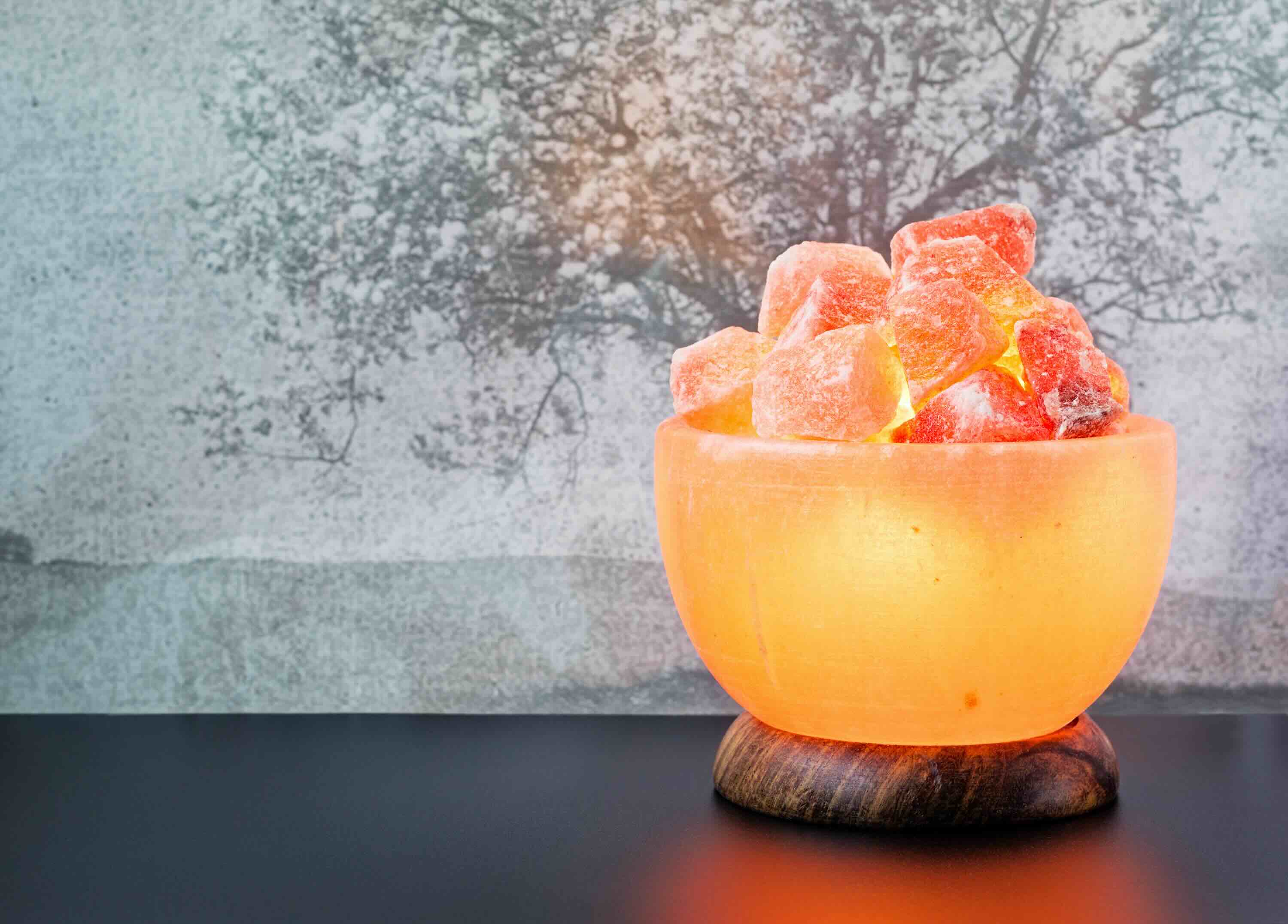

Furniture
What Happens If You Lick A Salt Lamp
Modified: January 3, 2024
Discover the surprising effects of licking a salt lamp and how it can enhance your furniture. Explore the benefits and potential risks in this insightful article.
(Many of the links in this article redirect to a specific reviewed product. Your purchase of these products through affiliate links helps to generate commission for Storables.com, at no extra cost. Learn more)
Introduction
Welcome to the curious world of salt lamps! These unique and captivating objects have gained popularity in recent years, with people using them not only as decorative pieces but also as potential sources of health benefits. But what happens if you lick a salt lamp? In this article, we will explore the composition of salt lamps, the potential effects of licking them, as well as the risks involved. So, let’s embark on a journey of discovery to satisfy our curiosity and shed some light on the subject.
Salt lamps are no ordinary lamps. They are crafted from large salt crystals, typically mined from underground salt mines in various parts of the world. These crystals are then hollowed out to make room for a light bulb or candle, which illuminates the lamp from within. The result is a mesmerizing warm glow that adds a touch of tranquility to any space.
The composition of salt lamps is what sets them apart. These lamps are primarily made from pink Himalayan salt, which is known for its high mineral content. It contains minerals such as potassium, calcium, magnesium, and iron, which give the salt its distinctive pink color. These minerals are believed to contribute to the potential health benefits associated with salt lamps.
Now, let’s address the burning question: what happens if you lick a salt lamp? Well, the taste might not be what you expect. Licking a salt lamp is unlikely to result in the typical salty taste you would experience when licking a table salt crystal. The surface of a salt lamp is generally dry, and your tongue may not come into direct contact with the salt crystals themselves.
Instead, if you were to lick a salt lamp, you might only taste a slight mineral undertone or residue if there is any. It’s important to note that salt lamps are not designed for consumption, and licking them is not recommended. In fact, there are potential health risks associated with licking a salt lamp, which we will explore in the next section.
Before we dive deeper into the potential health risks, it’s essential to understand that salt lamp usage is primarily for decorative purposes or to create a soothing ambiance. The alleged health benefits of salt lamps, such as improved air quality and mood enhancement, are still being studied and debated. So, let’s explore the potential risks involved in licking a salt lamp and why it’s best to avoid such actions.
Key Takeaways:
- Embrace the soothing ambiance and potential benefits of salt lamps, but refrain from licking them. Prioritize safety and well-being by using salt lamps as intended for a calming atmosphere.
- Enjoy the enchanting glow of salt lamps while prioritizing safety. Use them for creating a tranquil ambiance and potential mood enhancement, but avoid ingesting or licking them.
Read more: What Happens If You Break A Lava Lamp
What is a Salt Lamp?
Salt lamps are unique decorative pieces that add warmth and charm to any space. These lamps are made from large salt crystals, typically sourced from underground salt mines. The most common type of salt used in salt lamps is pink Himalayan salt, which is known for its beautiful pink hue and high mineral content.
The creation of a salt lamp begins with carefully selecting a large salt crystal. The crystal is then hollowed out, either by hand or with the help of machinery, to create space for a light bulb or candle. The light source placed inside the lamp illuminates the salt crystals, resulting in a soft, warm glow.
One of the most fascinating aspects of a salt lamp is its composition. Pink Himalayan salt is believed to be millions of years old and is rich in a variety of minerals. These minerals, including potassium, calcium, magnesium, and iron, are responsible for the salt’s unique color and are touted for potential health benefits.
Many people are drawn to salt lamps not only for their aesthetic appeal but also for the atmosphere they create. The warm, subtle light emitted by a salt lamp is often described as calming and soothing, making it an ideal addition to relaxation spaces such as bedrooms, meditation rooms, or living areas.
It’s important to note that salt lamps are not intended to provide substantial illumination like traditional lamps. Their purpose is to create a cozy and ambient environment while potentially offering some health benefits.
Some people also believe that salt lamps can help improve air quality. It is believed that when the lamp is heated, it releases negative ions into the air. Negative ions are thought to neutralize positive ions, which are commonly produced by electronic devices and can contribute to indoor air pollution. While scientific research on the specific effects of salt lamps on air quality is limited, many individuals report feeling a sense of freshness and clarity when using a salt lamp.
Overall, salt lamps are more than just attractive decor pieces. They have become a popular addition to homes and offices for their potential health benefits and ability to create a calming ambiance. However, it’s important to remember that salt lamps should not be ingested or used as a replacement for medical treatments.
Composition of a Salt Lamp
Have you ever wondered what gives salt lamps their enchanting appeal? It’s all in their composition. Salt lamps are predominantly made from pink Himalayan salt, which is rich in minerals and imparts a beautiful pink hue. Let’s delve into the composition of a salt lamp and explore the elements that make them so captivating.
Pink Himalayan salt, the primary material used in salt lamps, is a natural and unrefined form of salt. It is mined from the ancient salt deposits found in the Himalayan mountain range. The salt crystals used for making salt lamps are carefully selected to ensure their quality and authenticity.
One of the defining features of pink Himalayan salt is its high mineral content. This type of salt contains minerals like potassium, calcium, magnesium, and iron, which are all essential for the human body. These minerals contribute to the salt’s distinctive pink color and are believed to contribute to the potential health benefits associated with salt lamps.
The mineral composition of salt lamps is what makes them unique. These lamps emit negative ions into the surrounding air when heated, thanks to the presence of minerals in the salt crystals. Negative ions are negatively charged particles that are naturally present in the environment, particularly in nature-rich areas like mountains and waterfalls.
Negative ions are associated with various potential health benefits. They are believed to have a positive impact on our well-being by reducing air pollution, improving mood, and enhancing overall mental and physical health. While the specific effects of negative ions from salt lamps are still being studied, many individuals report a sense of tranquility and improved well-being when using these lamps.
In addition to their mineral composition, salt lamps are also hygroscopic. This means they can attract and absorb water molecules from the surrounding environment. When the lamp is turned on and heated, the moisture in the salt crystal evaporates, and any impurities or pollutants present in the water are left behind. This process may potentially lead to improved air quality in the immediate vicinity of the lamp.
It’s important to note that the actual amount of negative ions emitted by a salt lamp is dependent on factors such as the size of the lamp and the heat generated by the light bulb or candle inside. While salt lamps are appealing for their potential health benefits, it is crucial to maintain realistic expectations and understand that they may not have a significant impact on air quality or overall well-being.
The composition of a salt lamp, primarily consisting of pink Himalayan salt and its mineral content, is what makes these lamps not only visually appealing but also potentially beneficial for creating a soothing and refreshing atmosphere. However, it is important to remember that any health benefits associated with salt lamps should be viewed as complementary and not a substitute for medical advice or treatment.
The Effects of Licking a Salt Lamp
Curiosity can sometimes get the better of us, leading us to wonder what would happen if we were to lick a salt lamp. While the idea may seem intriguing, it’s essential to understand the potential effects and consequences before considering such an action.
First and foremost, it’s important to note that salt lamps are not designed for consumption. The surface of a salt lamp is generally dry, and your tongue may not come into direct contact with the salt crystals themselves. Consequently, licking a salt lamp is unlikely to result in the typical salty taste you would expect from licking a table salt crystal.
However, if you were to lick a salt lamp, you might still taste a slight mineral undertone or residue if there is any present. The minerals found in pink Himalayan salt lamps, such as potassium, calcium, magnesium, and iron, could potentially be transferred to your tongue through this contact. This may result in a mild, unfamiliar taste or sensation.
While the taste experience may not be severe, it’s important to highlight that licking a salt lamp is not recommended. Salt lamps are primarily intended for decorative purposes or to create a soothing ambiance. Engaging in actions like licking a salt lamp could potentially lead to health risks and other undesirable consequences.
One of the potential health risks associated with licking a salt lamp is the introduction of unwanted contaminants into your body. Salt lamps are exposed to the surrounding environment, which means they can accumulate dust, pollutants, and other impurities over time. These substances may adhere to the surface of the lamp and could be transferred to your tongue if you were to lick it.
Furthermore, salt lamps are powered by electrical components, such as light bulbs or cords, which are not meant to come into contact with saliva or moisture. Licking a salt lamp could potentially lead to electric shocks or other electrical hazards, posing a significant risk to your safety.
It’s important to remember that the alleged health benefits of salt lamps, such as improved air quality and mood enhancement, are still under debate and scientific research. Licking a salt lamp does not guarantee any additional health benefits; instead, it may expose you to unnecessary risks.
Therefore, it is highly recommended to refrain from licking or ingesting a salt lamp. If you are interested in reaping the potential benefits of a salt lamp, it is best to use it safely as intended – as a decorative piece or to create a peaceful and relaxing atmosphere in your living space.
If you find yourself tempted to lick a salt lamp out of curiosity, remember that it is always better to err on the side of caution. Appreciate the beauty and potential benefits of salt lamps from a distance and explore other safe ways to enhance your well-being.
To summarize, the effects of licking a salt lamp may result in a mild mineral taste or residue, but the potential health risks and potential contamination outweigh any potential benefits. Protect your safety and well-being by using salt lamps as intended and refraining from actions that could lead to undesired consequences.
Be cautious when licking a salt lamp as it may contain dirt, dust, or other contaminants. Ingesting salt from the lamp can also lead to excessive sodium intake, so it’s best to avoid licking it altogether.
Health Risks of Licking a Salt Lamp
While the idea of licking a salt lamp might seem harmless or even intriguing, it is important to recognize and understand the potential health risks associated with such an action. Licking a salt lamp can expose you to various hazards and should be strictly avoided. Let’s delve deeper into the health risks involved and why it’s crucial to prioritize your well-being.
One of the primary health risks of licking a salt lamp is the introduction of contaminants into your body. Salt lamps are exposed to the surrounding environment and accumulate dust, allergens, and other pollutants over time. Licking the surface of a salt lamp can potentially transfer these unwanted substances into your mouth and introduce them into your system.
Furthermore, salt lamps are often powered by electrical components, such as light bulbs or cords, which are not meant to come into contact with moisture or saliva. Licking a salt lamp may result in electric shock hazards or other electrical injuries, jeopardizing your well-being and safety.
In addition to potential contamination and electrical risks, licking a salt lamp can also lead to oral health problems. The surface of a salt lamp is not designed for ingestion and may contain rough edges or irritants that can harm your tongue, gums, or the soft tissues of your mouth. This could potentially result in cuts, abrasions, or other oral injuries.
Moreover, salt lamps are not meant to be consumed for a reason. The minerals found in pink Himalayan salt lamps, while beneficial in small amounts, can be harmful or imbalanced when consumed in larger quantities. Licking a salt lamp could introduce an excessive amount of these minerals into your system, potentially causing electrolyte imbalances or other adverse effects.
It is also crucial to acknowledge that salt lamps are not regulated or approved for internal use by any health authorities. Their potential benefits, such as improved air quality or mood enhancement, are still under scrutiny and scientific research. Engaging in actions like licking a salt lamp could lead to false expectations or misguided beliefs about their health effects.
Lastly, if you have any existing medical conditions or sensitivities, such as allergies or respiratory issues, the contaminants or irritants present on the surface of a salt lamp could exacerbate your symptoms or trigger an allergic reaction. It is vital to prioritize your health and consult with a healthcare professional if you have any concerns or conditions that may be affected by salt lamp usage.
To safeguard your well-being, it is essential to use salt lamps as intended – as decorative pieces or for creating a tranquil ambiance. Avoid the temptation to lick or ingest a salt lamp, as it can lead to potentially serious health risks, such as contamination, oral injuries, electrolyte imbalances, and exacerbation of existing medical conditions.
Remember, the beauty and potential benefits of salt lamps can be enjoyed from a distance, without compromising your health and safety. Prioritize responsible use and explore other safe methods to enhance your well-being and create a soothing environment in your space.
Read more: What Happens If You Shake A Lava Lamp
Potential Benefits of Using a Salt Lamp
Salt lamps have gained popularity not only for their aesthetic appeal but also for their potential health benefits. While scientific research is still ongoing and more evidence is needed to fully understand the extent of these benefits, many individuals report positive experiences when using salt lamps. Let’s explore some of the potential benefits associated with the use of salt lamps.
Improved Air Quality: One of the most commonly cited benefits of salt lamps is their ability to potentially improve indoor air quality. Salt lamps are believed to release negative ions into the surrounding environment when heated. Negative ions are negatively charged particles that are thought to neutralize positive ions, which are commonly produced by electronic devices and contribute to air pollution. While scientific studies on the specific effects of salt lamps on air quality are limited, many individuals claim to experience a fresher and cleaner indoor atmosphere when using salt lamps.
Mood Enhancement: The soft and warm glow emitted by salt lamps can create a soothing atmosphere that promotes relaxation and a sense of well-being. Some people find that the gentle light helps to alleviate stress, reduce anxiety, and enhance overall mood. Salt lamps are often used in meditation spaces, bedrooms, and living areas to create a calming ambiance and foster a sense of tranquility.
Reduced Electromagnetic Radiation: In our modern world, we are constantly exposed to electromagnetic radiation from various electronic devices. Some individuals believe that salt lamps can help mitigate the potential negative effects of this radiation by emitting negative ions, which are believed to counteract the positive ions emitted by electronic devices. While scientific research on this specific aspect is in its infancy, some people claim to experience a reduction in symptoms associated with exposure to electromagnetic fields when using salt lamps.
Nighttime Sleep Aid: The soft and warm glow of a salt lamp can create an ideal environment for restful sleep. The subtle lighting is soothing to the eyes and can promote relaxation, making it easier to unwind and prepare for a good night’s sleep. Placing a salt lamp in the bedroom and using it as a gentle nightlight can help create a serene sleeping environment.
Enhanced Well-Being: Many users of salt lamps report an overall improvement in their well-being. While the specific mechanisms behind these effects are still being studied, individuals claim to experience increased energy levels, improved concentration, and a general sense of positivity when using salt lamps. These benefits may be attributed to the combination of the calming ambiance and the potential release of negative ions from the salt lamp.
It’s important to note that the potential benefits of salt lamps may vary from person to person, and individual experiences may differ. While many people report positive effects, others may not experience the same benefits. It is also crucial to recognize that salt lamps should not replace medical treatments or professional advice.
To summarize, salt lamps have gained popularity due to their potential benefits, including improved air quality, mood enhancement, reduced electromagnetic radiation, and potential sleep aid. While scientific research is ongoing, many individuals find value in using salt lamps to create a soothing and refreshing environment in their homes or workplaces. As with any health-related product, it is important to approach salt lamp usage with realistic expectations and prioritize your well-being.
How to Safely Use and Clean a Salt Lamp
Now that you have a better understanding of the potential benefits and risks associated with salt lamps, it’s important to learn how to safely use and maintain them. By following these guidelines, you can ensure the longevity of your salt lamp and enhance your overall safety and satisfaction.
1. Choose a stable surface: When placing your salt lamp, make sure to select a stable and level surface. This will prevent accidental tipping or damage to the lamp. Avoid placing your salt lamp on delicate or easily damaged surfaces.
2. Keep it dry: Salt lamps are not meant to come into contact with water or moisture. Exposure to moisture can cause damage to the lamp and its electrical components. Keep your salt lamp in a dry environment and avoid placing it in areas prone to high humidity, such as bathrooms.
3. Use a proper light source: Salt lamps can be powered by light bulbs or candles. If you choose to use a lightbulb, select one with an appropriate wattage and size for your lamp. Make sure the lightbulb is securely inserted into the lamp and does not touch the salt crystal to prevent overheating or damage to the lamp.
4. Clean with a dry cloth: To clean your salt lamp, simply wipe it with a dry and lint-free cloth. Avoid using water or any cleaning agents, as they can damage the salt crystal. Regular dusting will help maintain the lamp’s appearance and functionality.
5. Avoid excessive heat exposure: While salt lamps can withstand moderate heat, it’s best to keep them away from direct sources of heat, such as stoves or fireplaces. Prolonged exposure to high temperatures can cause the salt crystal to crack or melt. Keep your salt lamp in a cool, well-ventilated area.
6. Keep away from pets and children: Salt lamps are not toys and should be kept out of reach of pets and young children. The electrical components pose a risk of electric shock if tampered with. Keep cords secured and ensure that pets and children cannot access the lamp to prevent accidents.
7. Replace the light bulb when needed: Over time, the light bulb in your salt lamp may dim or burn out. When this happens, replace the bulb with a new one of the appropriate wattage and size. Follow the manufacturer’s instructions for bulb replacement, if provided.
8. Regularly inspect for damage: Check your salt lamp periodically for any signs of damage, such as cracks, chips, or loose electrical connections. If you notice any issues, it’s best to discontinue use and consult the manufacturer or a professional for assistance.
By following these safety guidelines, you can enjoy the beauty and potential benefits of your salt lamp while ensuring a safe and pleasant experience. Remember to prioritize your well-being and only use salt lamps as intended, as decorative pieces or for creating a calming ambiance.
If you have any specific concerns or questions about the safe usage and maintenance of your salt lamp, it’s always a good idea to consult the manufacturer’s instructions or seek advice from a qualified professional.
Conclusion
Salt lamps have captured the attention of many, not only for their enchanting glow but also for their potential health benefits. While the specific effects of salt lamps are still under scientific scrutiny, many individuals find value in using them to create a soothing atmosphere and potentially enhance their well-being.
However, it’s crucial to remember that salt lamps are primarily decorative pieces and should not be ingested or used as a replacement for medical treatments. Licking a salt lamp can expose you to potential contaminants, electrical hazards, and oral injuries. It is essential to prioritize your safety and well-being by refraining from such actions.
When using salt lamps, it is important to select a stable surface, keep them dry, and ensure a proper light source. Regular cleaning with a dry cloth will help maintain their appearance. Avoid excessive heat exposure and keep salt lamps out of reach of pets and children to prevent accidents.
While salt lamps may offer potential benefits such as improved air quality, mood enhancement, and reduced electromagnetic radiation, individual experiences may vary. It’s important to approach salt lamp usage with realistic expectations and recognize that scientific research on their effects is ongoing.
In conclusion, salt lamps add a touch of tranquility and visual appeal to any space. By understanding how to safely use and maintain them, you can enjoy their potential benefits while ensuring your safety and satisfaction. Remember to prioritize your well-being and consult with professionals for any specific concerns or questions regarding salt lamp usage.
Embrace the soothing ambiance and potential benefits of salt lamps as part of your overall wellness journey, and revel in the comforting glow they bring to your home or workspace.
Frequently Asked Questions about What Happens If You Lick A Salt Lamp
Was this page helpful?
At Storables.com, we guarantee accurate and reliable information. Our content, validated by Expert Board Contributors, is crafted following stringent Editorial Policies. We're committed to providing you with well-researched, expert-backed insights for all your informational needs.
